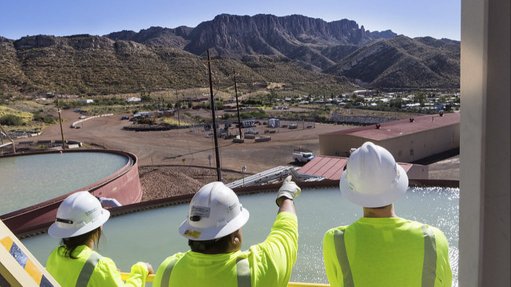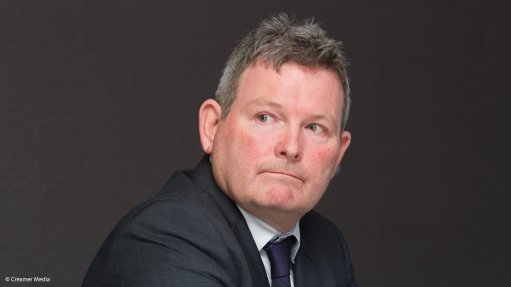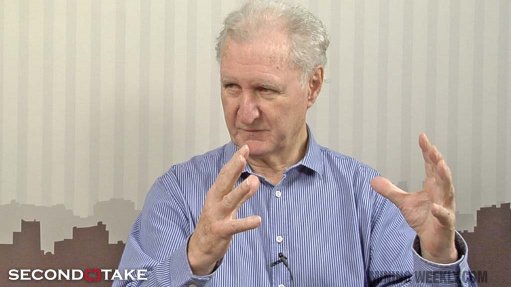Technology initially developed for oil and gas industry enables visualisation of subsurface of entire mining area

University of the Witwatersrand geophysics lecturer Dr Musa Manzi speaks to Mining Weekly's Chantelle Kotze about his latest work in three dimensional seismic reflection interpretation.
Using only traditional exploration techniques, such as drilling boreholes, does not enable an accurate perspective of the structural complexity of the earth’s subsurface at depth. However, using new three-dimensional (3D) seismic reflection interpretation technology, initially developed for the oil and gas industry, can enable 3D visualisation of the subsurface of an entire mining area.
This is according to Gold Fields-sponsored student-turned-academic Dr Musa Manzi. He lectures geophysics at the University of the Witwatersrand and is researching new ways of processing and interpreting 3D seismic reflection data – acquired by gold miners Gold Fields and AngloGold Ashanti – of the Witwatersrand basin.
Manzi, one of the first two black South Africans to obtain a PhD in geophysics, started his master’s thesis in 2009. The thesis entailed reprocessing the 3D seismic reflection data to maximise the resolution of the structures to view the subsurface of the Witwatersrand basin in more detail than was previously achievable, and to pinpoint where the gold orebodies and the structural faults were. The thesis was then converted into his PhD project in 2010, owing to the usefulness of the dataset if further interpreted.
He advocates the need to introduce a new well-designed 3D seismic data acquisition method, referred to as BroadSeis-BroadSource technology, and the software packages needed to process and interpret these datasets in the mining industry for better imaging of subtle geological features.
In an interview with Mining Weekly, Manzi says, while the 3D seismic reflection technique may be deemed very costly, its application in the Witwatersrand basin has been recognised over the years as a core geophysical method, as it is able to provide high-resolution imaging of reefs, orebodies and the structures that crosscut the orebodies.
The use of 3D seismic reflection data interpretation will, in turn, “help improve the ability to validate structures, model faults, and their fault loss zones and reduce the risk associated with deep mining and drilling of deep and costly surface exploration boreholes into faulted areas”, he says.
While exploration drill holes provide point estimates of the reserve, 3D seismic reflection data surveys function as a 3D tool in the oil and gas and mining industries, as they provide an understanding of the continuity of the entire orebody. The surveys will also provide the information required to understand the structural complexity at the subsurface before mining starts.
The 3D seismic reflection model, constructed from the collected and interpreted data, will then be able to serve as the basis for accurate mine designs and project scheduling.
One of the key spin-offs of Manzi’s PhD project is the location of methane gas, a critical factor in deep-level mine safety. “Our reinterpretation of old data using new technology enabled us to see the faults and fractures underground, which bring methane into mining areas. This enabled us to determine that methane locates around certain faults” says Manzi. He adds that, therefore, one is able to integrate 3D seismic data with in-mine observations of methane to identify which faults are likely to contain methane, and then project this into the unmined areas.
The interpretation that still remains to be done using the 3D seismic reflection data involves determining the source of methane gas and why these structures are prone to methane transmission.
Meanwhile, Manzi, as part of his ongoing research, is identifying and modelling structures and fault zones based on the 3D seismic reflection data sets acquired by Gold Fields and AngloGold Ashanti within the Witwatersrand basin to ensure that drilling does not take place in the fault zones.
His research also involves developing his own mathematical algorithms that help detect structures that are below the seismic resolution limit. He explains that the resolution of the current data indicates that faults with vertical displacement less than 25 m cannot be directly imaged, but are still detected. The tailor-made algorithms will help improve the resolution of the data to a point at which minor faults and reefs can be detected and resolved by seismics, thus providing a more accurate model.
Another area of importance for Manzi, and one that has not yet been done, is the integration of mine seismicity and 3D seismic reflection data of the Witwatersrand basin. “All deep mines in the Witwatersrand basin have seismometer networks installed. They continually monitor seismic events related to mining. Hundreds of these events are located each day on a typical deep mine, most of them too small to cause any damage. The majority occur close to the stopes, but some events delineate structures tens of metres away from mining that may pose a risk.
Manzi intends investigating the spatial correlation between the events detected by seismic networks and structures revealed by 3D seismics. This could prove useful in reducing the risk posed by rockbursts.
The data could go a long way towards determining safety within the Witwatersrand basin, Manzi concludes.
Comments
Press Office
Announcements
What's On
Subscribe to improve your user experience...
Option 1 (equivalent of R125 a month):
Receive a weekly copy of Creamer Media's Engineering News & Mining Weekly magazine
(print copy for those in South Africa and e-magazine for those outside of South Africa)
Receive daily email newsletters
Access to full search results
Access archive of magazine back copies
Access to Projects in Progress
Access to ONE Research Report of your choice in PDF format
Option 2 (equivalent of R375 a month):
All benefits from Option 1
PLUS
Access to Creamer Media's Research Channel Africa for ALL Research Reports, in PDF format, on various industrial and mining sectors
including Electricity; Water; Energy Transition; Hydrogen; Roads, Rail and Ports; Coal; Gold; Platinum; Battery Metals; etc.
Already a subscriber?
Forgotten your password?
Receive weekly copy of Creamer Media's Engineering News & Mining Weekly magazine (print copy for those in South Africa and e-magazine for those outside of South Africa)
➕
Recieve daily email newsletters
➕
Access to full search results
➕
Access archive of magazine back copies
➕
Access to Projects in Progress
➕
Access to ONE Research Report of your choice in PDF format
RESEARCH CHANNEL AFRICA
R4500 (equivalent of R375 a month)
SUBSCRIBEAll benefits from Option 1
➕
Access to Creamer Media's Research Channel Africa for ALL Research Reports on various industrial and mining sectors, in PDF format, including on:
Electricity
➕
Water
➕
Energy Transition
➕
Hydrogen
➕
Roads, Rail and Ports
➕
Coal
➕
Gold
➕
Platinum
➕
Battery Metals
➕
etc.
Receive all benefits from Option 1 or Option 2 delivered to numerous people at your company
➕
Multiple User names and Passwords for simultaneous log-ins
➕
Intranet integration access to all in your organisation



















